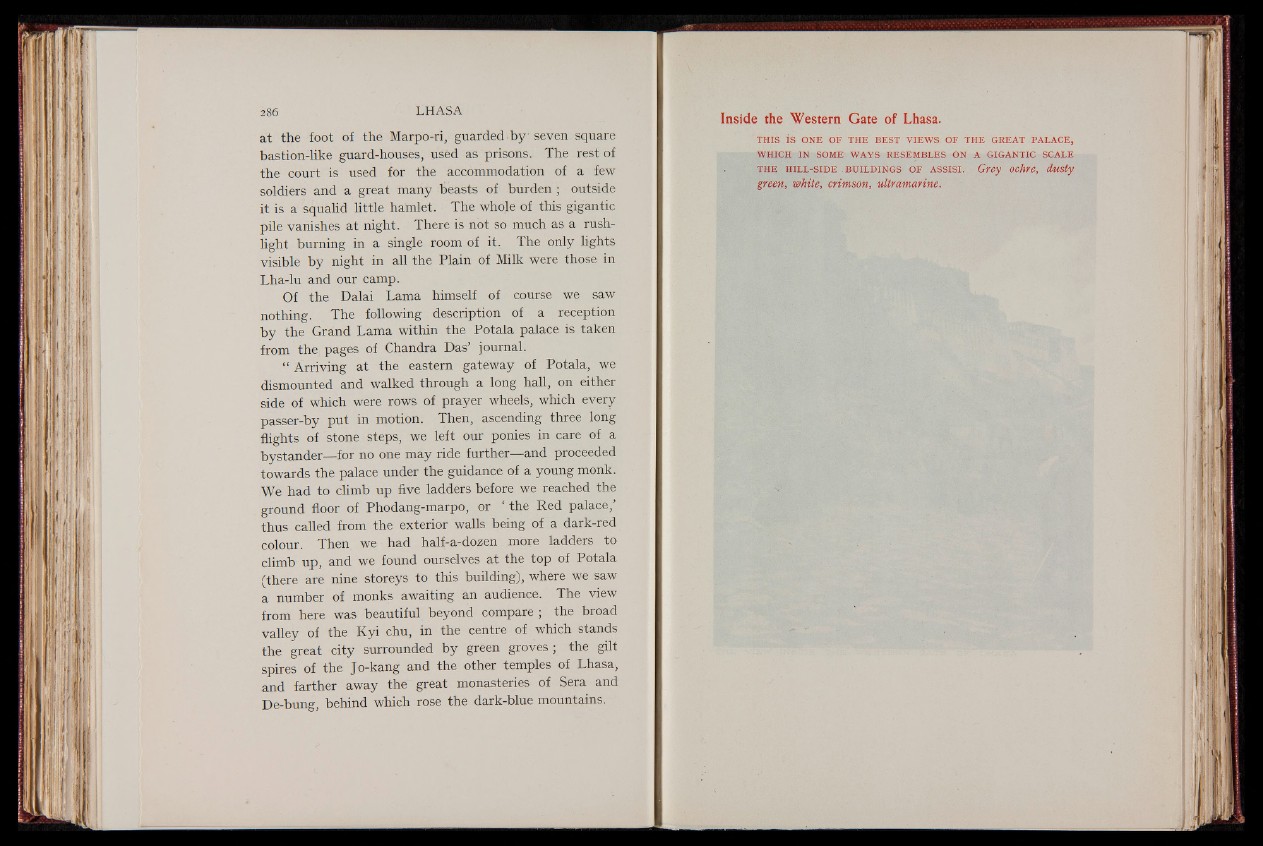
at the foot of the Marpo-ri, guarded by seven square
bastion-like guard-houses, used as prisons. The rest of
the court is used for the accommodation of a few
soldiers and a great many beasts of burden ; outside
it is a squalid little hamlet. The whole of this gigantic
pile vanishes at night. There is not so much as a rush-
light burning in a single room of it. The only lights
visible by night in all the Plain of Milk were those in
Lha-lu and our camp.
Of the Dalai Lama himself of course we saw
nothing. The following description of a reception
by the Grand Lama within the Potala palace is taken
from the pages of Chandra Das’ journal.
“ Arriving at the eastern gateway of Potala, we
dismounted and walked through a long hall, on either
side of which were rows of prayer wheels, which every
passer-by put in motion. Then, ascending three long
flights of stone steps, we left our ponies in care of a
bystander— for no one may ride further— and proceeded
towards the palace under the guidance of a young monk.
We had to climb up five ladders before we reached the
ground floor of Phodang-marpo, or ‘ the Red palace,’
thus called from the exterior walls being of a dark-red
colour. Then we had half-a-dozen more ladders to
climb up, and we found ourselves at the top of Potala
(there are nine storeys to this building), where we saw
a number of monks awaiting an audience. The view
from here was beautiful beyond compare ; the broad
valley of the Kyi chu, in the centre of which stands
the great city surrounded by green groves; the gilt
spires of the Jo-kang and the other temples of Lhasa;,
and farther away the great monasteries of Sera and
De-bung, behind which rose the dark-blue mountains.
THIS i s ONE OF THE BEST VIEWS OF THE GREAT PALACE,
WHICH IN SOME WAYS RESEMBLES ON A GIGANTIC SCALE
. t h e h i l l - s i d e . b u i l d i n g s o f a s s i s i . Grey ochre, dusty
green, white, crimson, ultramarine.